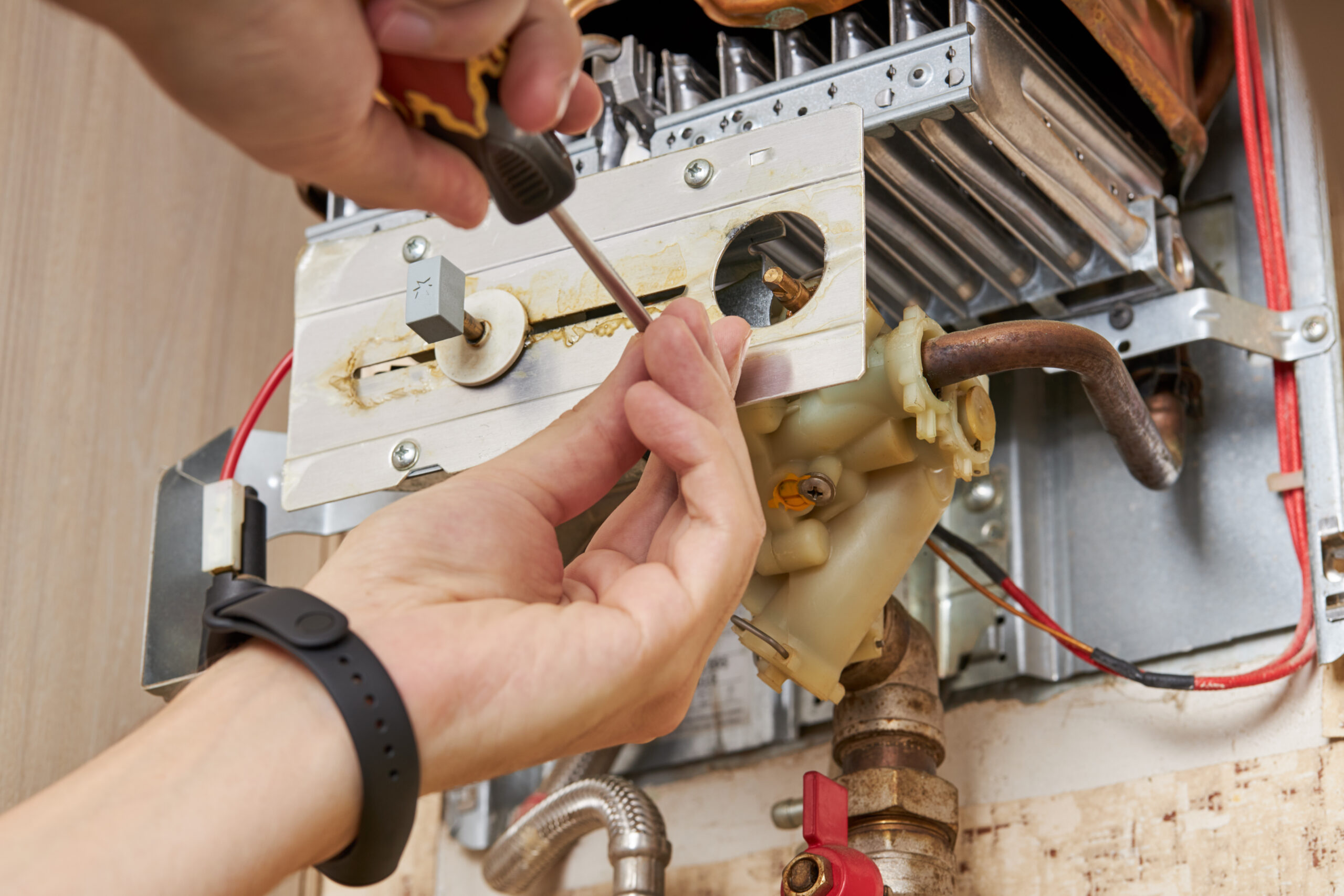
service technician repairing gas water heater indoors. water heater maintenance. diy concept.
Are you a new homeowner or simply looking to extend the lifespan of your water heater? You’ve come to the right place! This guide will provide you with all the necessary information and tips to keep your water heater in top shape for years to come. From basic maintenance tasks to energy-saving practices, we’ve got you covered. So let’s dive in and learn how you can ensure smooth functioning of your water heater while also saving time, money, and energy.
Types of Water Heaters
Before we get into the maintenance and care tips, let’s first understand the different types of water heaters commonly found in households. The two main types are tankless water heaters and traditional tank-style water heaters.
Tankless Water Heaters
Tankless water heaters, also known as on-demand or instant water heaters, heat the water directly without using a storage tank. They are more energy-efficient since they only heat the amount of water needed at any given time. This type of water heater is ideal for smaller households with lower hot-water demands.
Tankless water heaters can last up to 20 years with proper maintenance and care. To extend their lifespan, you need to flush the system at least once a year to remove any mineral buildup that can affect its efficiency. We also recommend you have a professional inspect and service your tankless water heater every few years.
Traditional Tank-Style Water Heaters
As the name suggests, this type of water heater stores hot water in a tank until it’s needed. The tank is constantly heating and reheating the water to maintain a set temperature, even when not in use. These are more common in larger households with higher hot-water demands.
Traditional tank-style water heaters can last around 10-15 years with proper maintenance. To ensure longevity, be sure to regularly drain and flush the tank every year to remove sediment buildup. This will also improve the efficiency of the heater and save on energy costs. Checking the anode rod every few years and replacing it if necessary can also help prolong the lifespan of a traditional system.
When purchasing a new water heater, be sure to find a reliable company. One way to find the best water heater company is by asking for recommendations from friends and family who have recently purchased or serviced their water heaters. You can also do some research online and read reviews from other customers.
Make sure to choose a company that offers warranties and has certified technicians who can properly install and maintain your water heater. Don’t be afraid to shop around and compare prices before making a decision. Investing in a quality water heater now will save you money in the long run.
Maintenance Tips
Now that we know about the different types of water heaters, let’s discuss how you can keep them functioning properly.
Regular Inspections
It’s crucial to regularly inspect your water heater for any signs of wear and tear. Check for leaks, rust, or strange noises coming from the unit. If you notice any issues, it’s best to address them immediately before they turn into bigger problems.
Finding a reliable and trustworthy water heater repairman is essential for the proper maintenance of your water heater. One of the best ways to find a reputable repairman, such as one from Santucci Plumbing, is by asking for recommendations from anyone who’s recently had their water heaters serviced. You can also do some research online and read reviews from other customers. Look for companies that offer warranties and have certified technicians who are experienced in working with your specific type of water heater.
Flushing the Tank
Sediment buildup inside the tank can cause your water heater to work harder and reduce its lifespan. It’s recommended to flush the tank at least once a year to remove any sediment or mineral deposits. If you live in an area with hard water, consider flushing it more frequently.
To properly flush a water heater tank, first turn off the power or gas supply to the unit. Next, connect a garden hose to the drain valve at the bottom of the tank and run it outside or into a bucket. Open the valve and let the water drain until it runs clear. You can also use this opportunity to check for any leaks or damage to the tank.
Adjusting the Temperature
Setting your water heater temperature too high can not only be dangerous but also increase energy costs. The ideal temperature is between 120-140 degrees Fahrenheit (49-60 degrees Celsius). You can consult your user manual for instructions on how to adjust the temperature.
Energy-Saving Tricks
Apart from regular maintenance, there are some energy-saving practices you can incorporate into your routine.
Insulate Your Water Heater
Insulating your water heater can help reduce heat loss and save energy. You can purchase an insulating blanket specifically designed for water heaters or use a DIY method with materials like fiberglass insulation.
Use Cold Water When Possible
Opting for cold water when doing laundry or washing dishes can greatly reduce the workload on your water heater. This not only saves energy but also extends the lifespan of your appliance.
Install Water-Saving Fixtures
By installing low-flow showerheads and faucets, you can reduce the amount of hot water used without sacrificing water pressure. This not only saves energy but also reduces wear and tear on your water heater.
By following these simple tips, you can ensure the health and longevity of your water heater. Remember to regularly inspect, flush, and adjust the temperature of your unit, and incorporate energy-saving practices into your daily routine. With proper care, your water heater will continue to provide you with hot water for all your household needs for years to come. Good luck out there!


